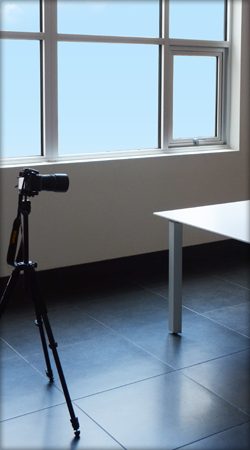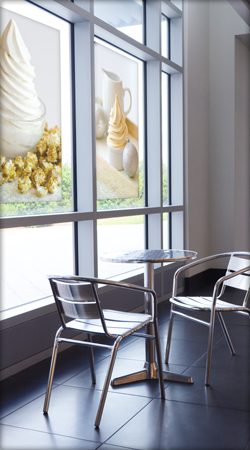It’s true, consumers eat with their eyes. That’s why it’s extremely helpful to have good photographs to showcase your products. It’s like adding curb appeal to your menu; the more delicious and mouthwatering an entrée appears, the more likely it is that people will order it. Fortunately, with the advancement in camera technology you don’t need the newest or most expensive equipment to achieve delectable photographs. Just follow these tips and you’ll be well on your way to capturing photographs that will be sure to grab your customers’ attention, and great for social media sites such as Pinterest and Instagram.
 1. Use natural light. The good news is light from the sun is free, so take advantage of it! It is also the best way to capture the true color of your subject. Fluorescent and incandescent bulbs have a color that can throw off the white balance in your camera.
1. Use natural light. The good news is light from the sun is free, so take advantage of it! It is also the best way to capture the true color of your subject. Fluorescent and incandescent bulbs have a color that can throw off the white balance in your camera.
2. Adjust your settings. Most digital cameras (if you’re not already working with a more advanced DSLR) come with a “Macro” mode. Use this setting to achieve a more shallow depth of field – allowing one section to be in focus and leaving the rest blurry.
3. Don’t use the flash on the camera. This is a big no-no! The flash will create a very harsh light on your subject, causing the colors to become washed out and unwanted shadows to appear in the background. Going back to Tip #1, the sun is bright enough for your picture!
4. Higher ISO settings can be your friend. If you can’t seem to get enough light and need to keep up that fast shutter speed, it’s ok to bump up your ISO level. Be careful not to set it too high or your photos will get grainy. If you have questions about ISO, refer to your camera’s manual.
5. Use a tripod. To keep your photos as crisp and clear as possible, it’s best to use a sturdy tripod (or table top if you don’t have one).This prevents the camera from shaking while you click away. It can also keep the camera positioned at the same angle for multiple shots if you like consistency.
6. Pay attention to detail. Make sure all of the platters or props are clean and ready for their “close-up.” Dirty plates don’t send the best message to your audience. This is important for your subject, too. Avoid drips or anything that appears out of place, unless of course that’s what you’re trying to capture. If details are overlooked, it may mean more photo editing.
7. Choose an interesting or fun color palette. It helps to have a color palette that will complement your subject and will appeal to your customers. Colors help to bring the photograph together and create a sense of cohesiveness. Color can be incorporated through fabric, serveware, placemats and props.
 8. Prepare your food how it would be if served. There is no need to delve into the art and technicalities of fine food photography to achieve a nice photo that will work for your business; if you over-style the food for the sake of the photograph, your customers may have higher expectations. It is best to style the food similarly to the way it will be served.
8. Prepare your food how it would be if served. There is no need to delve into the art and technicalities of fine food photography to achieve a nice photo that will work for your business; if you over-style the food for the sake of the photograph, your customers may have higher expectations. It is best to style the food similarly to the way it will be served.
9. Utilize basic photo editing techniques. Don’t worry, you don’t have to have Adobe Photoshop (although it is helpful.) Any basic programs will allow you to adjust white balance and contrast. Just remember, less is more. If your white balance didn’t come out quite right, make sure you don’t have any overly blue or yellow photos by adjusting white balance. Contrast helps to make your photo “pop” by making the darks darker and the lights lighter.
10. Cover all your sizing needs. To ensure that you have usable shots, pay attention to the way you are orienting your camera. It is best to take a variety of portrait and landscape images so that you have the photos you need, regardless of where you might use them initially.Who knows, you might be on your way to creating your own posters or menu photos. Always take more photos than you need!
After all of your hardwork is done, make sure to display your work where customers can see them. Areas of high traffic or next to where your customers line-up are great real estate opportunities. The possibilities are literally endless; you can print large versions for posters and menu boards, or smaller versions for table tents and promotion flyers. Be creative!
